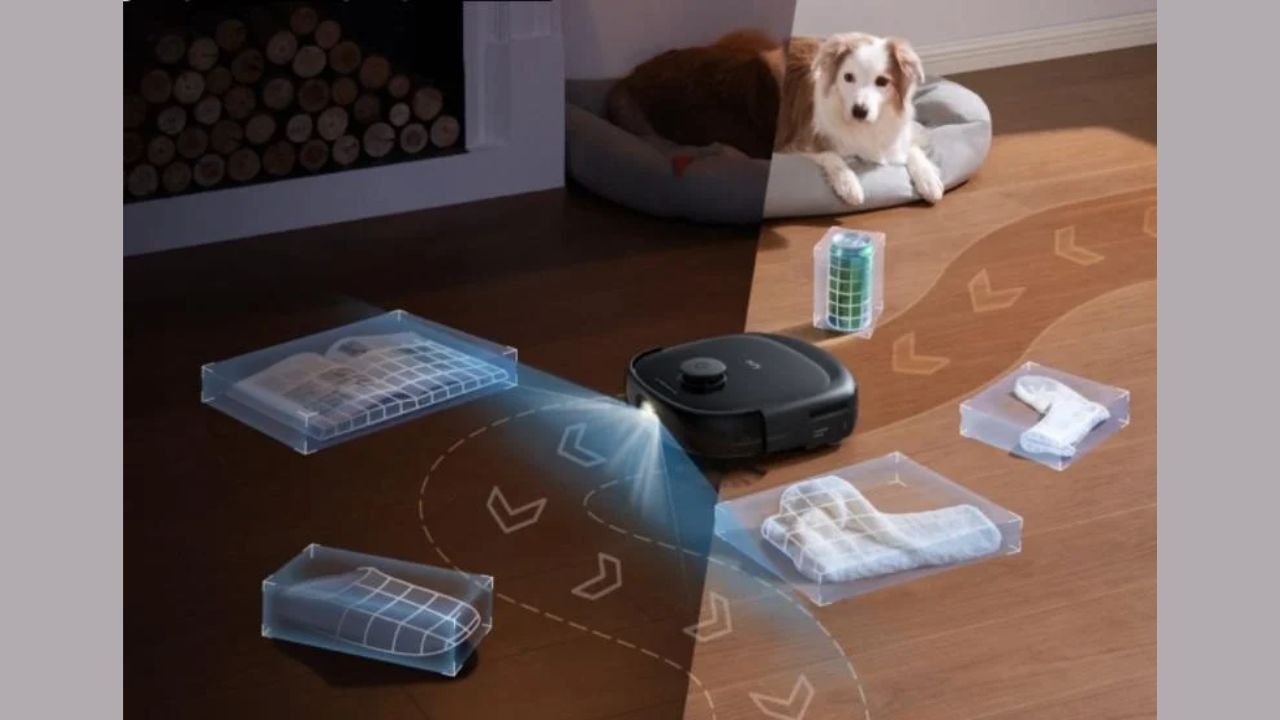Choosing a robot vacuum might be difficult when so many models promise pristine floors and easy cleaning. What actually distinguishes them the most is how skillfully they mix power, intelligent technology, and user-friendly features. The appropriate mix guarantees that you receive consistent cleaning without continual supervision. Buyers now prioritize performance, navigation, and convenience over flashy extras in order to simplify daily life. Understanding these important aspects allows you to avoid paying for gimmicks and instead invest in a machine that will provide long-term benefits. Let’s break down the most critical factors to consider when comparing robot vacuums.
What Cleaning Performance Features Should You Prioritize?
Suction Power and Brush Design
The suction power and brush design of a robot vacuum have a big role in how successfully it picks up dust, crumbs, and pet hair. Strong suction provides thorough cleaning, particularly on carpets, and an effective brush mechanism loosens material before vacuuming. Models with multi-directional brushes or rubber rollers help to eliminate knots and provide constant performance. Suction strength, measured in Pascals (Pa), provides a rapid performance comparison, with larger levels being preferable. However, the brush design is equally crucial since it drives dirt into the suction path. Together, these two qualities lay the groundwork for successful, daily cleaning on a variety of floor types.
Multi-Surface and Edge Cleaning Ability
Homes frequently have a combination of hardwood, tile, rugs, and carpet, so a robot vacuum must be able to transition easily between surfaces. Look for devices that automatically change the suction or brush height when switching floors. Another important consideration is the capacity to clean the edges of walls and corners, where dirt frequently hides. Some vacuums contain side brushes that sweep dirt into the main suction area, decreasing the need for manual touch-ups. Strong performance on both surfaces and edges guarantees that your robot vacuum does not overlook typical problem areas. The more adaptable the machine, the more likely you are to get consistent results without having to use a manual vacuum afterwards.
Battery Life and Charging Efficiency
A long-lasting battery is required if you want your robot vacuum to clean big areas in a single run. Look for models with a minimum duration of 90 minutes; however, luxury ones may last up to 180 minutes. Efficient charging is equally important. Many robots now return to their base autonomously, refuel, and start cleaning with no user intervention. This function saves time and guarantees that the work is completed even if the battery runs low midway. Extended battery life and clever charging mechanisms remove annoyance, making your vacuum more reliable for everyday cleaning duties in any size household.
How Important Are Smart Navigation and Mapping?
Laser and Camera-Based Mapping
Navigation technology determines how effectively a robot vacuum cleans. Laser-based devices (LiDAR) provide exact floor maps and perform well in low-light conditions. Camera-based mapping employs visual signals, which can be useful but may suffer in low-light settings. Both approaches enable the vacuum to clean in a systematic rather than random manner, saving time and energy. A well-mapped floor has fewer missed areas and requires less frequent cleaning. If your house has numerous rooms or floors, mapping is much more useful. Investing in a model with excellent mapping guarantees that your robot vacuum operates purposefully rather than randomly.
Obstacle Detection and Avoidance
Robot vacuums must maneuver around furniture, wires, and unforeseen detritus. Models with powerful sensors or AI-powered obstacle identification identify things in real time, avoiding annoying tangles and damage. This function allows the vacuum to glide gently around chairs, avoid fragile things, and change course fast. Some systems can even detect risks such as pet waste or spilled beverages, protecting you from unpleasant mishaps. Reliable obstacle avoidance means less supervision and more reliance on the machine to clean while you’re away. If you value your piece of mind, use robots with advanced detection and avoidance technologies for safe and efficient cleaning in busy households.
Zoned Cleaning and No-Go Areas
Mapping technology enables more than just navigation; it also provides you with control over where the vacuum cleans. Zoned cleaning enables you to guide the robot to certain locations, such as a kitchen after cooking or a corridor with high foot traffic. No-go zones allow you to restrict sensitive areas, such as children’s play areas or rooms containing fragile things, without using physical barriers. These characteristics save time by concentrating cleaning power where it is most required while keeping the robot out of trouble. For pet owners, the best robot vacuum for pet hair often includes these zoning functions, ensuring fur-heavy areas get extra attention.
Must-Have Smart Features for Daily Convenience
Voice Control and App Integration
Convenience makes a robot vacuum genuinely intelligent. You may start and stop cleaning with voice control via Alexa, Google Assistant. App connection increases versatility by allowing you to see maps, check cleaning history, and alter settings from anywhere. Many applications also give notifications when a cleaning cycle is complete or if the vacuum has an issue. Together, these functionalities provide real-time control and monitoring. For households that already utilize smart home devices, seamless integration makes vacuuming a part of your daily routine, providing hands-free ease while keeping your floors consistently clean.

Automatic Dirt Disposal
Emptying the trash is one of the least enjoyable aspects of having a robot vacuum, which is why autonomous dirt disposal has become a game-changer. Docking stations now have bigger bins that can retain weeks’ worth of dirt and trash, so they only need to be emptied on occasion. This lowers maintenance and keeps the robot ready for the next cleaning cycle. For allergy sufferers, sealed trash bags provide an added layer of cleanliness by keeping dust and allergens. While versions with self-emptying bases are more expensive, they provide unparalleled convenience and long-term efficiency for busy homes.
Scheduling and Custom Cleaning Modes
The option to schedule cleanings is essential for keeping floors clean without constant effort. Most robot vacuums now allow you to schedule certain days and hours, providing constant cleaning even while you’re not home. Custom cleaning modes provide versatility by allowing for deeper cleans on carpets, silent modes at night, and targeted spot cleaning after spills. These settings adapt to your habits, making the vacuum more versatile. With the correct schedule and settings, the machine adapts to your lifestyle rather than the other way around, resulting in smarter and more effective cleaning without continual manual management.
Conclusion
Robot vacuums have progressed from simple devices to powerful, intelligent home appliances. The top models combine high-quality cleaning performance, dependable navigation, and time-saving features. Suction power, brush design, and battery life all influence raw cleaning capabilities, whilst smart mapping and obstacle avoidance assure efficiency. Convenience features such as app connectivity, voice control, and automated dirt removal make everyday maintenance simpler than ever. By concentrating on these key features, you may discover a robot vacuum that provides both performance and peace of mind. The appropriate solution will silently keep your floors clean while you concentrate on what is most important.
You May Also Read: Navigating the Digital Tides: The Evolving Role of Senior Management











